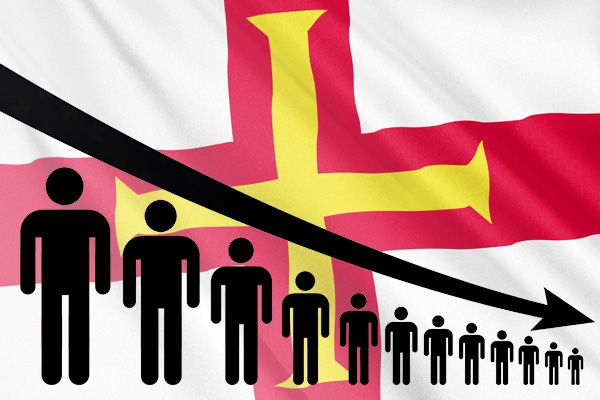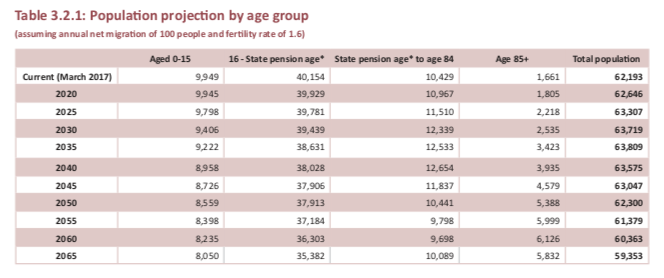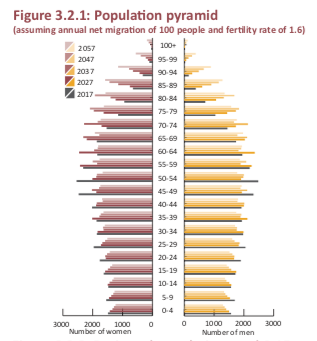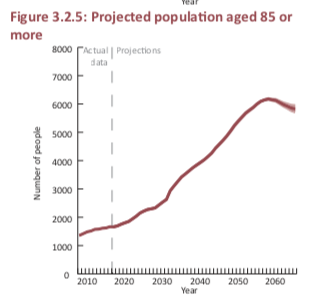

Guernsey's population is projected to have fallen to 59,000 people by 2065, a long-term projection has shown.
The document was the first of its kind to be released by the States, bringing together its detailed population projections using the GEM (Government Economic Modelling System), which draws data about the current population from the Rolling Electronic Census.

It has allowed a long-term view to develop taking account of factors such as changes in the average levels of net migration and fertility rates, with a goal of providing evidence for future policy making.
Projections indicated that there would be limited change in the population, with it forecast to increase to a maximum of around 64,000 by 2034 (2.6% larger), and beyond that point it will fall to 59,000 by 2065.
The population between compulsory school age and state pension age is also projected to fall - resulting in a 0.4% fall in the workforce.

This is all assuming an average level of annual net immigration of between two and three hundred people, which is what would be required to maintain the size of the current workforce.
"It is clear from the population projections that the island faces some long-term challenges," Deputy Gavin St Pier said. "While the predicted decline in total workforce, if levels of net migration continue at their current average level, it is not unexpected given the ageing demographic, the data we now have provides a level of insight previously missing.
"This will ensure the States of Guernsey is in possession of relevant facts before the Assembly makes some difficult but crucial policy decisions in the coming months and years, including around the strategic direction of the island’s overarching population policy.
"It is vital that we understand the shape and nature of the population, not just now but in 10, 20 and 30 years’ time. That is why the Policy & Resources Committee directed that we needed better population projections. The availability of this detailed data about our economy and population, from both the Rolling Electronic Census and the Government Economic Modelling systems we have built, will be vital if we are to successful meet the challenges ahead."


The makeup of the population is also projected to change over time. Fertility rates now are much lower than they were in the 1940s, 50s and 60s, so the projections show a shift in the balance of the population in different age groups.
It is expected that there will be a significant increase in the number of people over state pension age. As a result, the dependency ratio, which compares number of children and older people in the community to the number of people between compulsory school age and the state pension age, is projected to rise over time.
The projections will be used to inform policy development and evidence-based decision making in many areas, including the long-term planning of infrastructure requirements and delivery of services such as health and social care and education. The intention is that this data will be published on an annual basis.
Anyone wishing to read the Annual Guernsey Population Projection Bulletin can find it here.
Comments
Comments on this story express the views of the commentator only, not Bailiwick Publishing. We are unable to guarantee the accuracy of any of those comments.